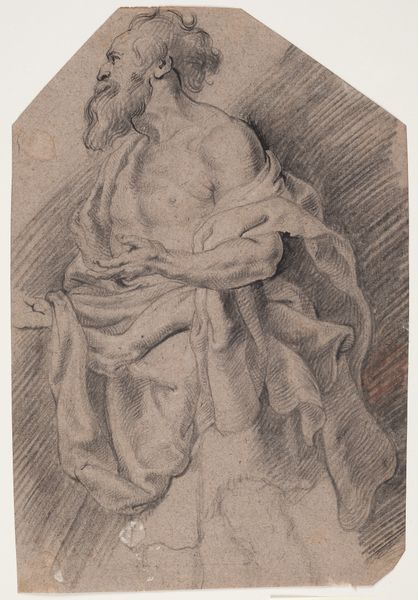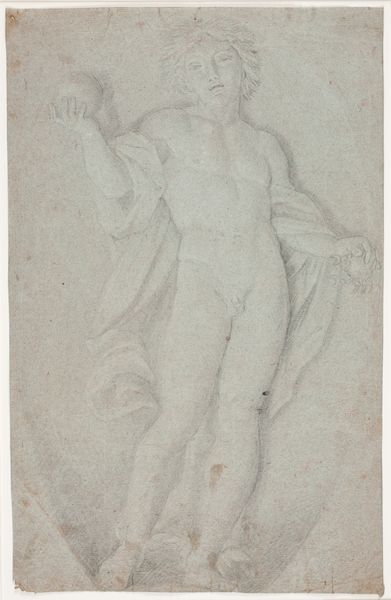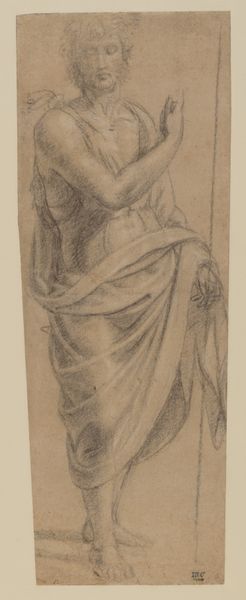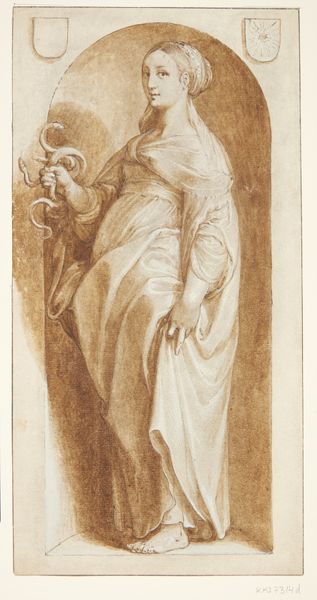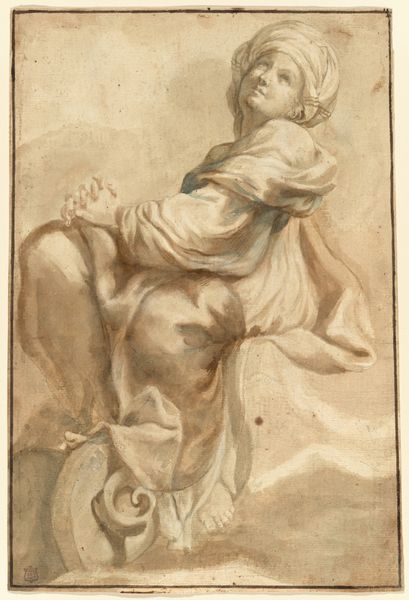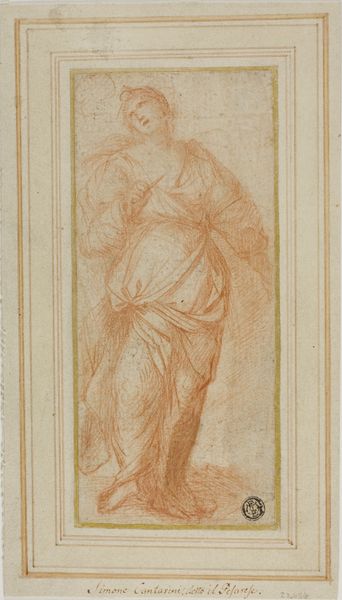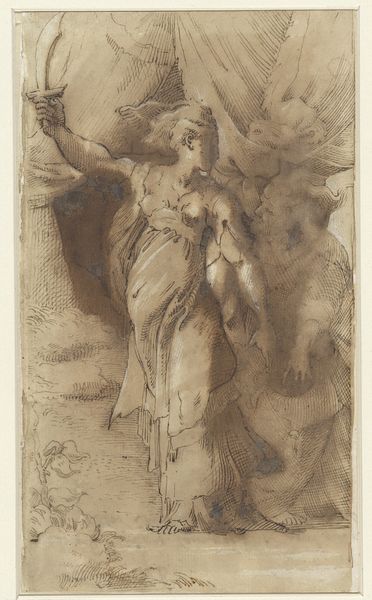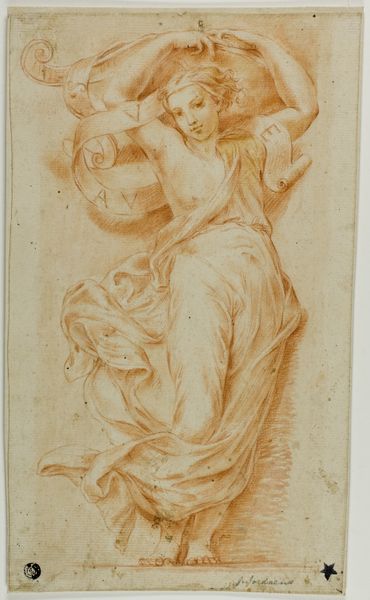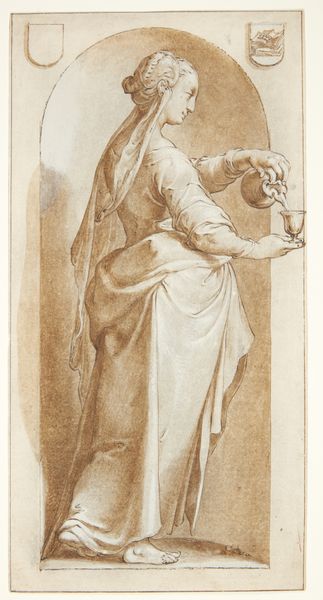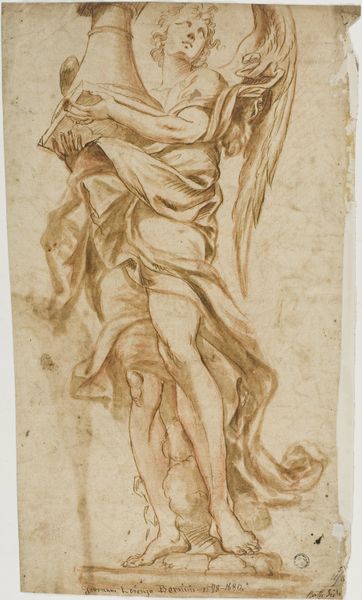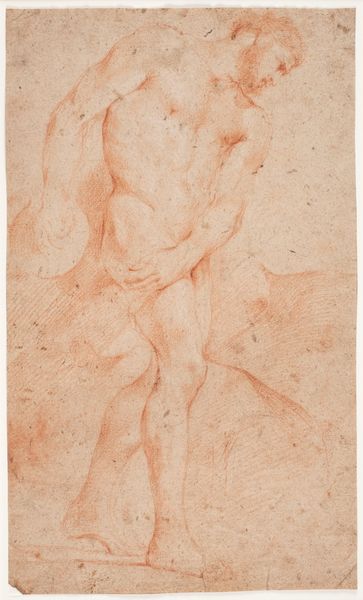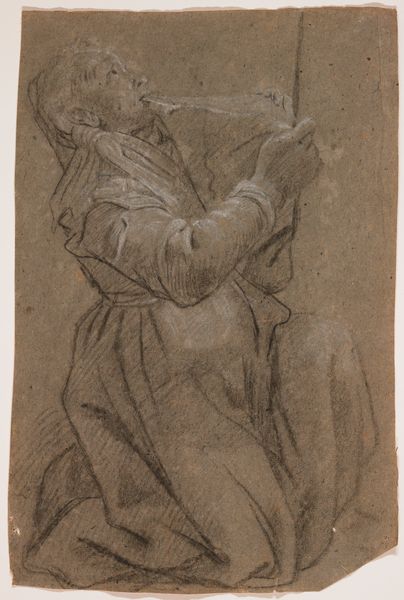
drawing, chalk, charcoal
#
portrait
#
drawing
#
high-renaissance
#
charcoal drawing
#
figuration
#
13_16th-century
#
chalk
#
charcoal
#
nude
Copyright: Public Domain
Editor: This is Raphael's "Caryatid," a chalk and charcoal drawing from around 1520. There's a fluidity and softness to it that I find captivating, almost like she’s emerging from the paper. What strikes you most about this drawing? Curator: What’s striking is Raphael's ability to evoke classical antiquity in a period of intense political and religious change. He's not just depicting a nude figure; he’s engaging with a tradition where the body represented civic virtue and idealized form. How do you think its display within a museum setting today influences how we read those historical implications? Editor: That’s a really good point. I guess seeing it here, it's almost…decontextualized? The history isn’t immediately apparent, but the virtuosity still shines through. Curator: Precisely! Museums create narratives. We're seeing Raphael through a specific institutional lens, one that often prioritizes artistic genius, sometimes obscuring the social functions this imagery served. Have you considered how this kind of idealised image played a part in consolidating power structures in Renaissance society? Editor: Not really, I guess I'm so focused on just… how pretty it is, honestly. But you’re right, it's impossible to separate it from the broader context. Curator: The beauty IS intentional, but its purpose moves beyond the aesthetic. Reflect on who got to view works like this. It wasn't the masses; it was elite circles. Therefore, such drawings served to legitimize specific forms of governance. Editor: So, the art becomes a symbol of power, a way to visually reinforce the existing hierarchy? It’s a pretty different way of thinking about Renaissance art than what I learned in class. Curator: It's a way to think critically about how museums like this one, display and, by extension, interpret artworks from vastly different eras for a contemporary audience. That tension – between raw artistic talent, historical context, and modern accessibility -is at the very core of this institution's ongoing project. Editor: Wow. I'll definitely think differently next time I see a nude drawing from the Renaissance! Thanks.
Comments
stadelmuseum about 2 years ago
⋮
Creating the impression of an elegant sculpture in high relief, this late Raphael drawing is a study for the wall decoration of the Sala di Costantino in the Vatican. By the time of his sudden death in 1520, the master had completed only designs for that room, which were then carried to realization by his workshop. Enhanced by a bit of brush wash, the black chalk softly models the subject, thus emphasizing the sensual corporality of a figure which reflects the influence of classical sculpture.
Join the conversation
Join millions of artists and users on Artera today and experience the ultimate creative platform.

